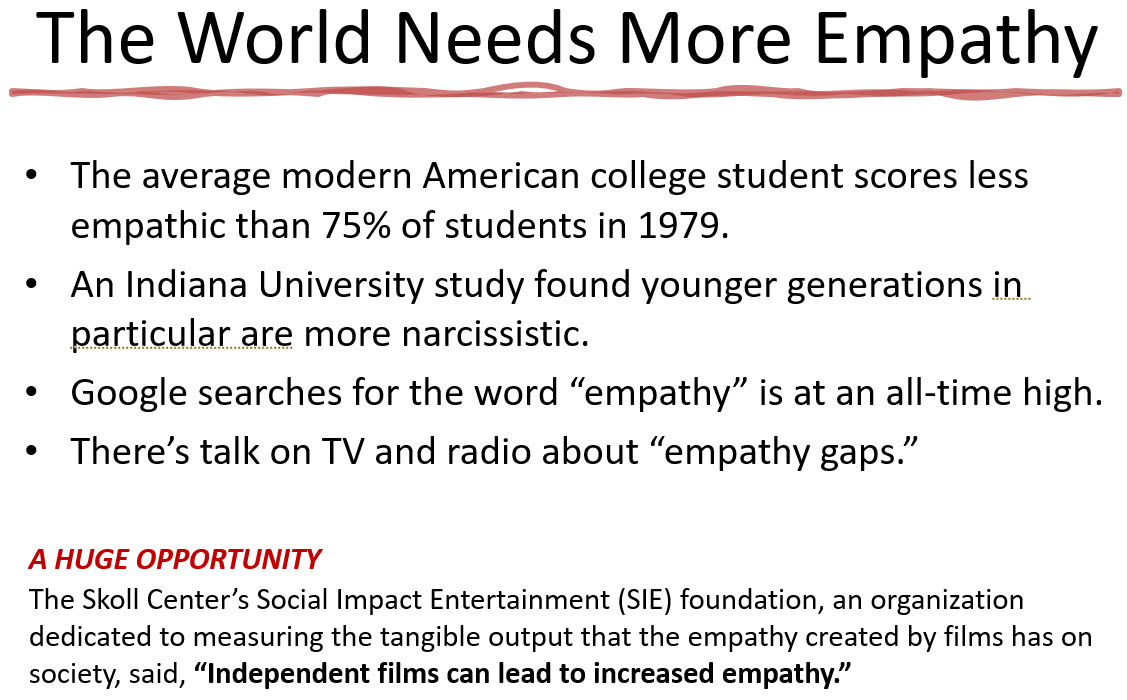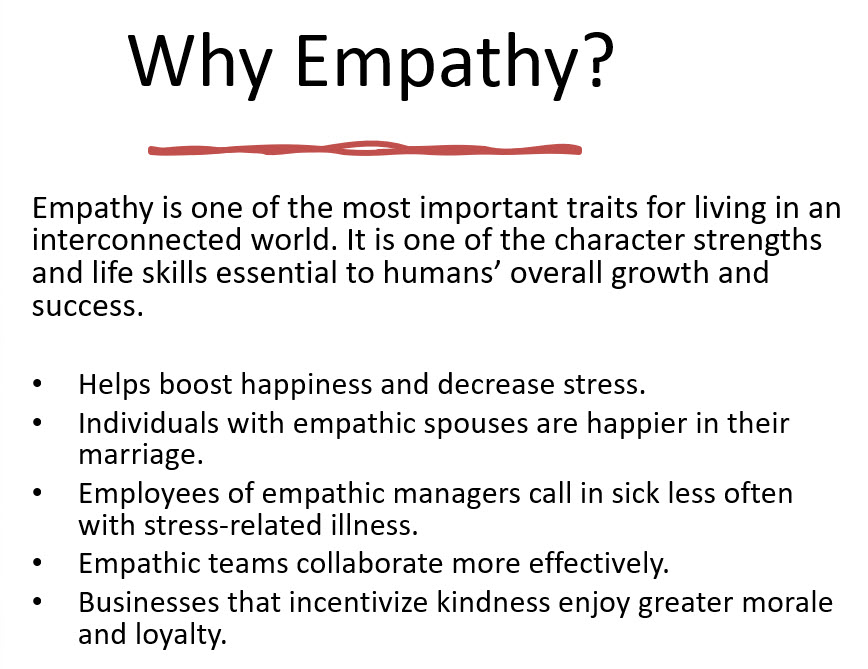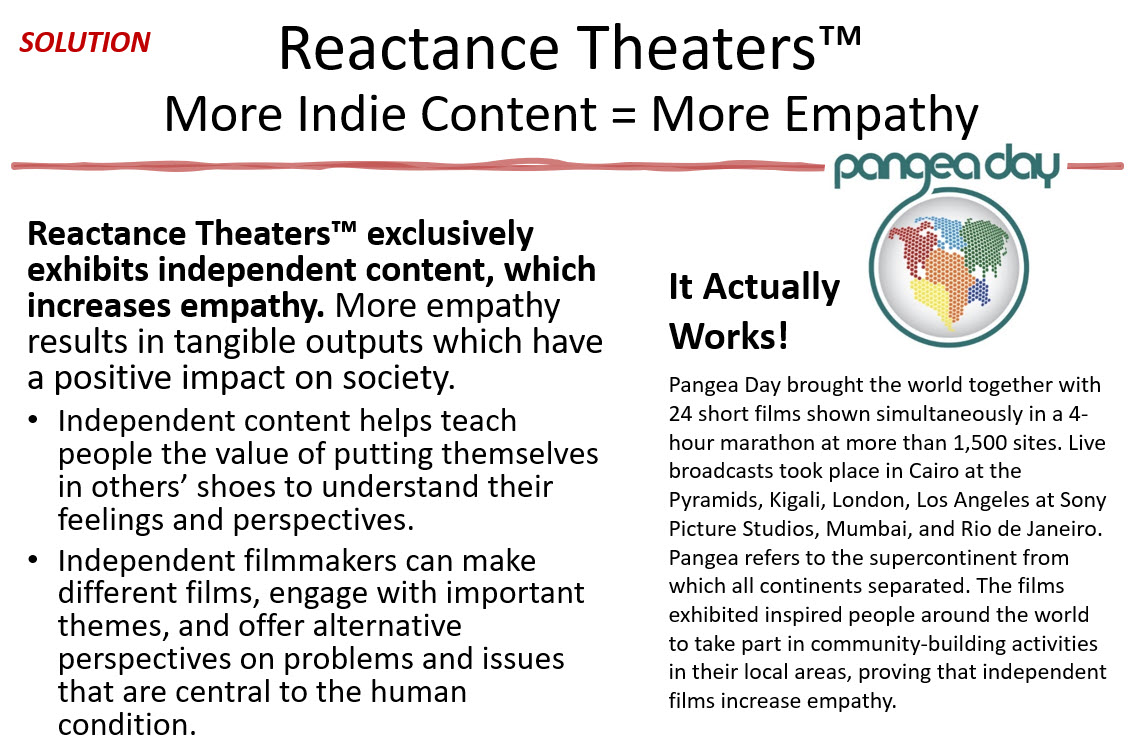Proprietary Technology
Independent Content
and Mass Distribution
Movies | Sports | Live Plays | Music Concerts | Comedy Tours | Advertising
We have three specific goals
for the indie entertainment industry…
Invent a New Technology
We made the first mass distribution system for live indie content
Meet an Unmet Business Need
Indie content needs mass distribution for commercial success.
Address a Problem of Society
The world needs more empathy. Indie content creates empathy.
1
New Tech, Patented Workflow
Proprietary Technology Powers the future of entertainment.
How we reach millions of motion picture enthusiasts all at once is inventive and unique.
The internet is not multicasting. Netflix, Amazon Prime, YouTube, and other video streaming services all use the unicast method of streaming. All networks within the internet support the unicast method of transmission which is why it is so popular. Unicasting is expensive because each viewer requires a unique connection and adequate bandwidth. The multicast method uses a fraction of the bandwidth required by traditional unicast transmission and is far less expensive.
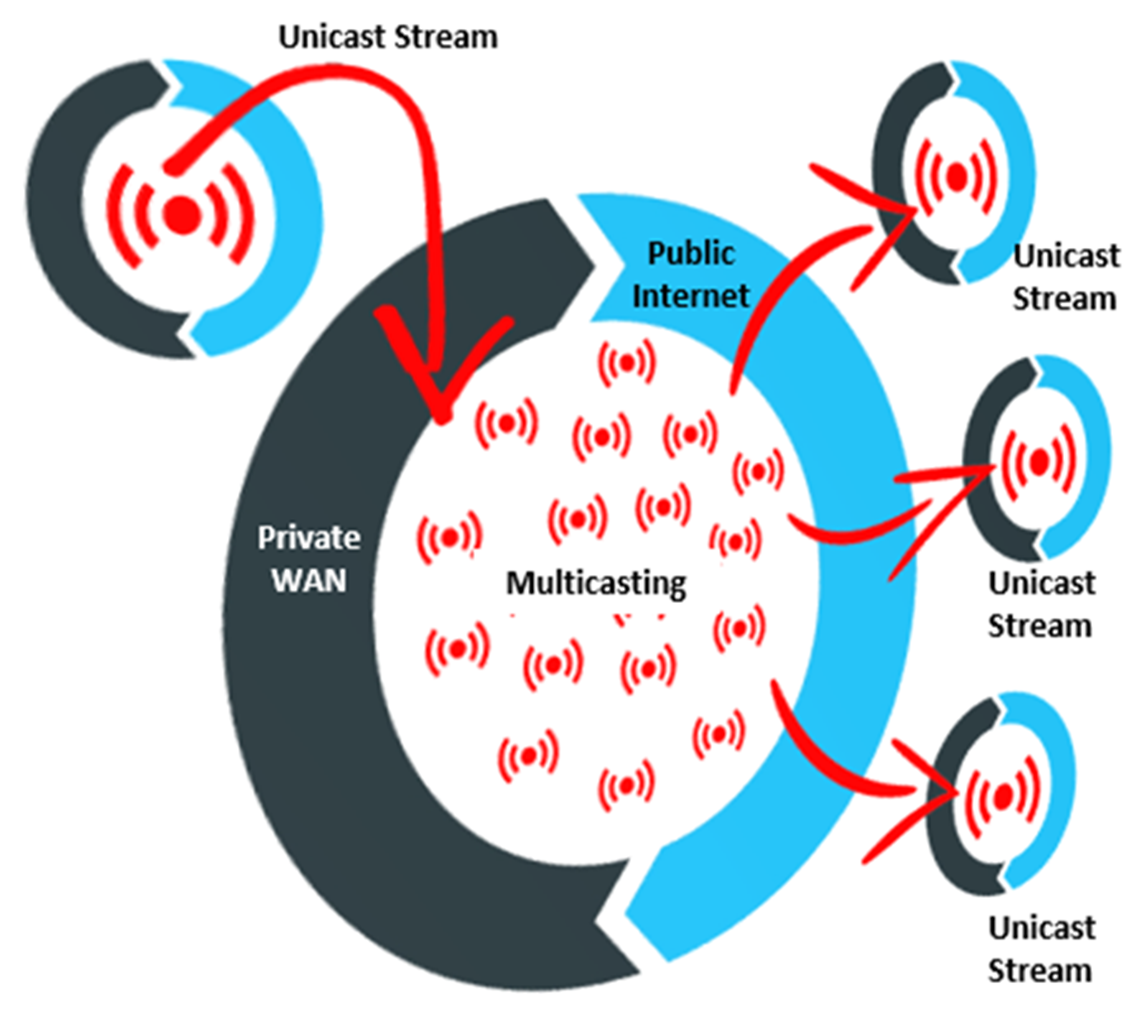
Our proprietary tech, a mission critical part of our patented Film Submission Workflow (FSW), takes a unicast stream, moves it to a private network, multiplies it exponentially, encrypts it, packs it up, and then sends it over the
public internet to unique endpoints without packet loss and with low latency. In short, we can multicast using the public internet at a substantially lower cost than unicast streams run. This tech powers ND Theaters™ our patented
FSW is how we change the world for the better.
Wisemen’s Patented Film Submission Workflow (FSW) is a Game Changer for the Industry
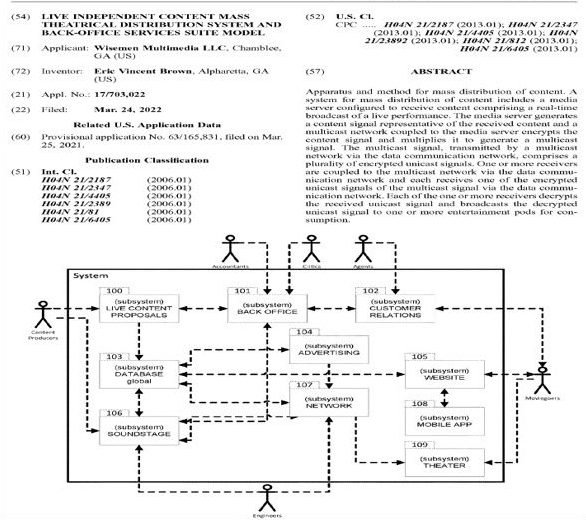
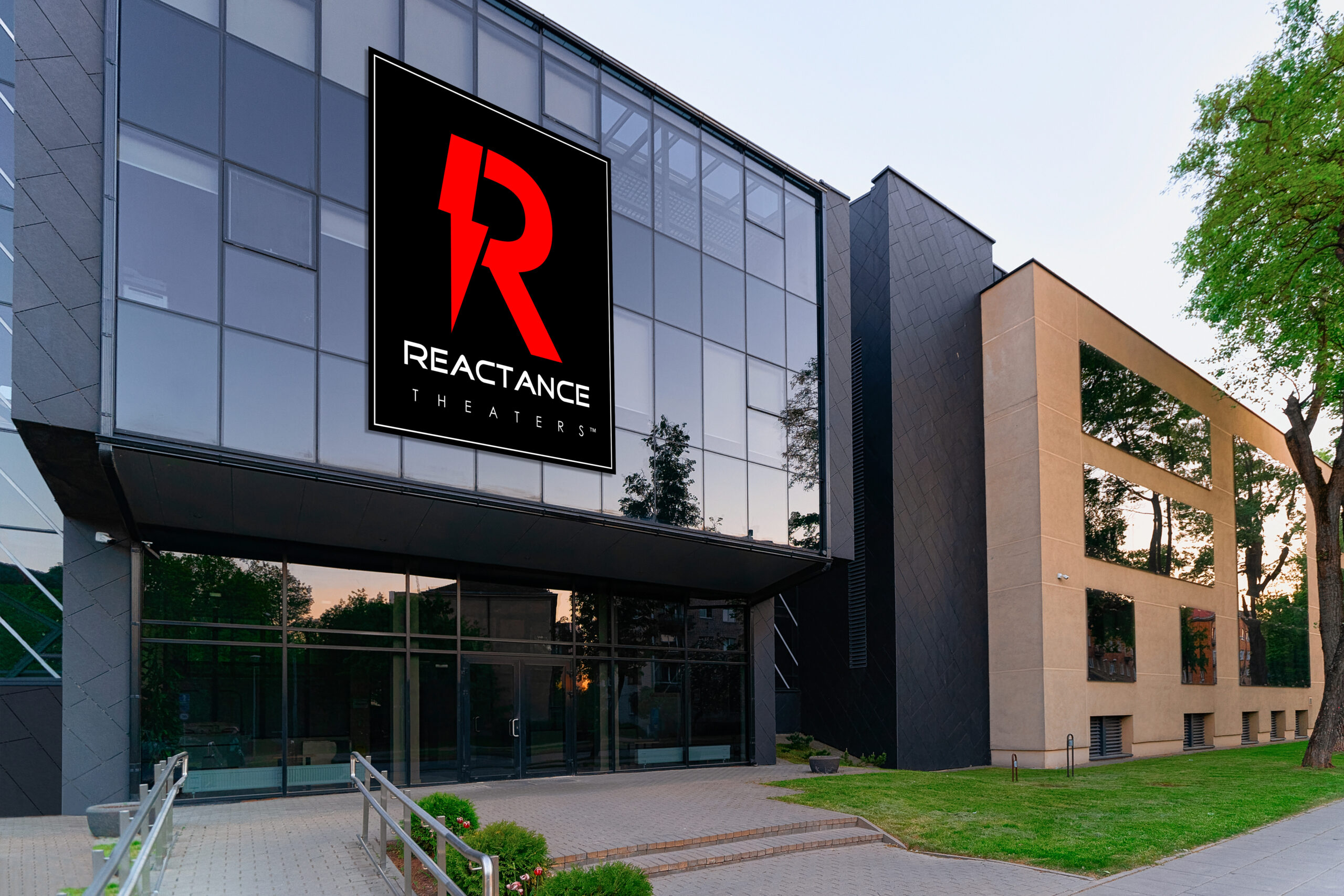

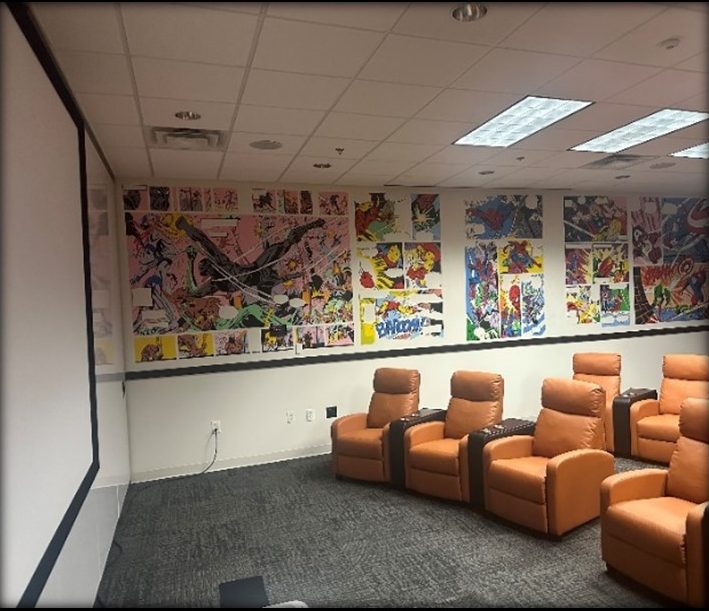
2
The Unmet Business Need
A New Pathway for Distribution
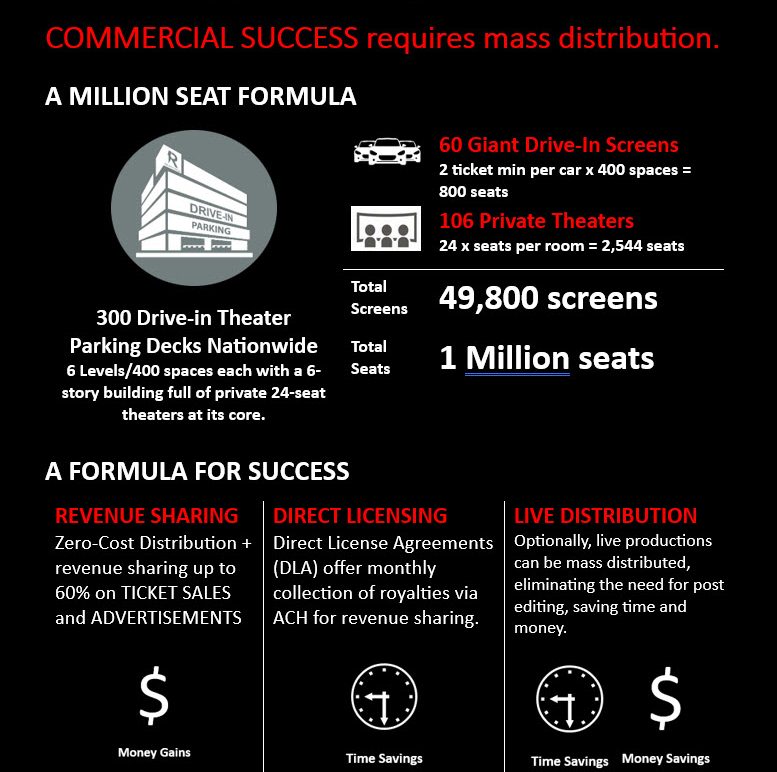
Independent Filmmakers and content producers rarely profit from video on demand streaming distribution.
Indie Films and Content Need Theatrical Release
Theatrical release = mass distribution = commercial success (profit). Without it, the likelihood of success for any content distributed outside of the mainstream legacy Hollywood system is slim to none.
Commercial success (i.e., profit) requires mass distribution. There has been no mass distribution system for independent films. Only 10% of independent films were released from 1999 to 2018 and out of those released, only 3.4% saw
a profit. However, $136 billion in entertainment dollars were spent at the box office and on home entertainment in 2019 with very few distribution opportunities for indie content to compete for those dollars. In 2019, it cost an
average of $96 to see an artist live in concert. The average person spends more than $29 on food, beverages, and merchandise at shows. The audience for “specialized” films is at an all-time high.
Commercial Success (Profit) Requires Mass Distrubtion

Most of the Indie films that did reach theaters during this time did not make a profit. While many believe streaming Video On Demand (VOD) platforms are the great equalizer for indie filmmakers, the truth is, streaming pales in comparison
to theatrical release. When indie films are mass distributed (released in theaters) their chance of profitability increases exponentially similar to those released by major Hollywood studios.
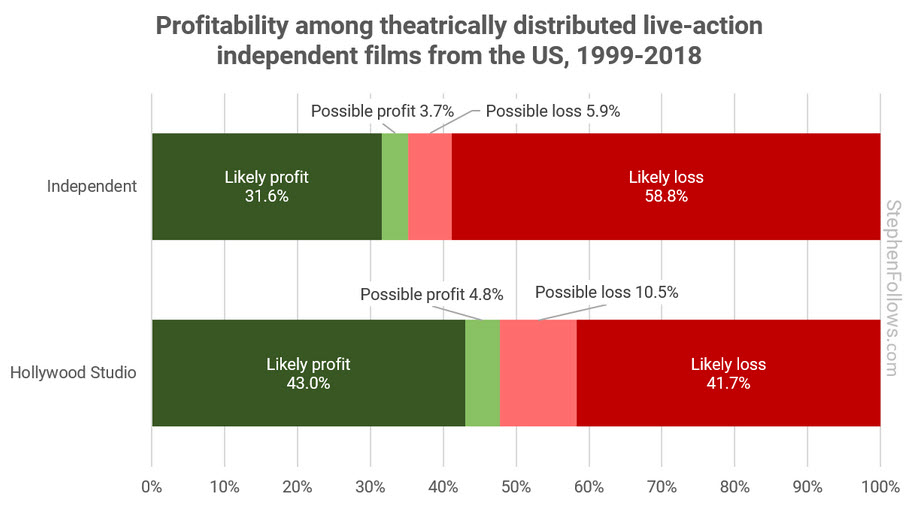
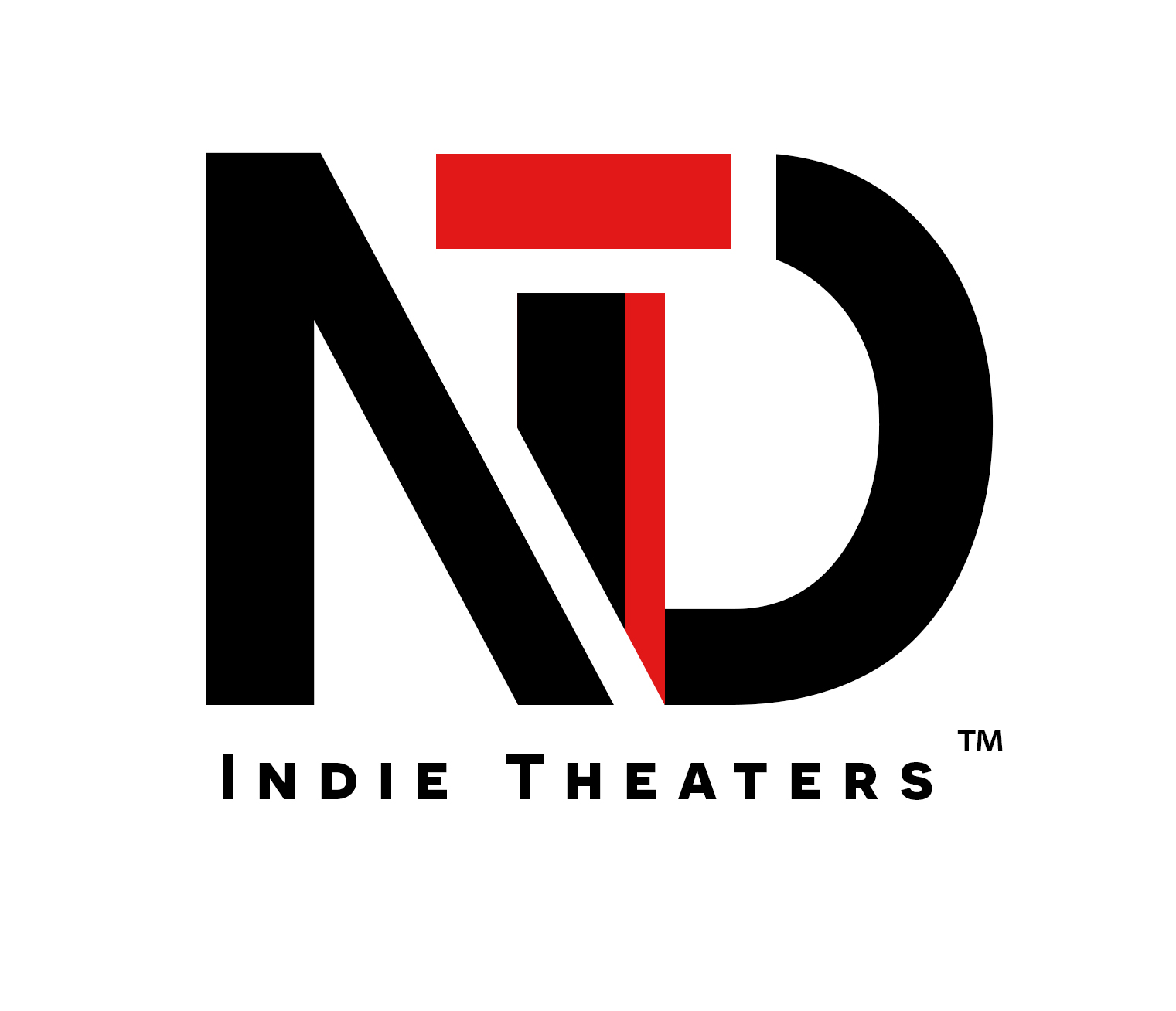
A New Box Office
In the legacy controlled Hollywood distribution system, gross box office = total earning of movie by selling tickets.
Our Math is a Little Different
We count tickets and ad sales and so do our content producers.
Ticket Sales + Ad Revenue = Box Office
Ticket Sales + Ad Revenue / Ticket Price = # Seats Sold.
Ticket Sales + Ad Revenue * DLA% = Filmmaker Revenue
DLA = Direct License Agreement (On average, 60% to content producers, 40% to Wisemen)
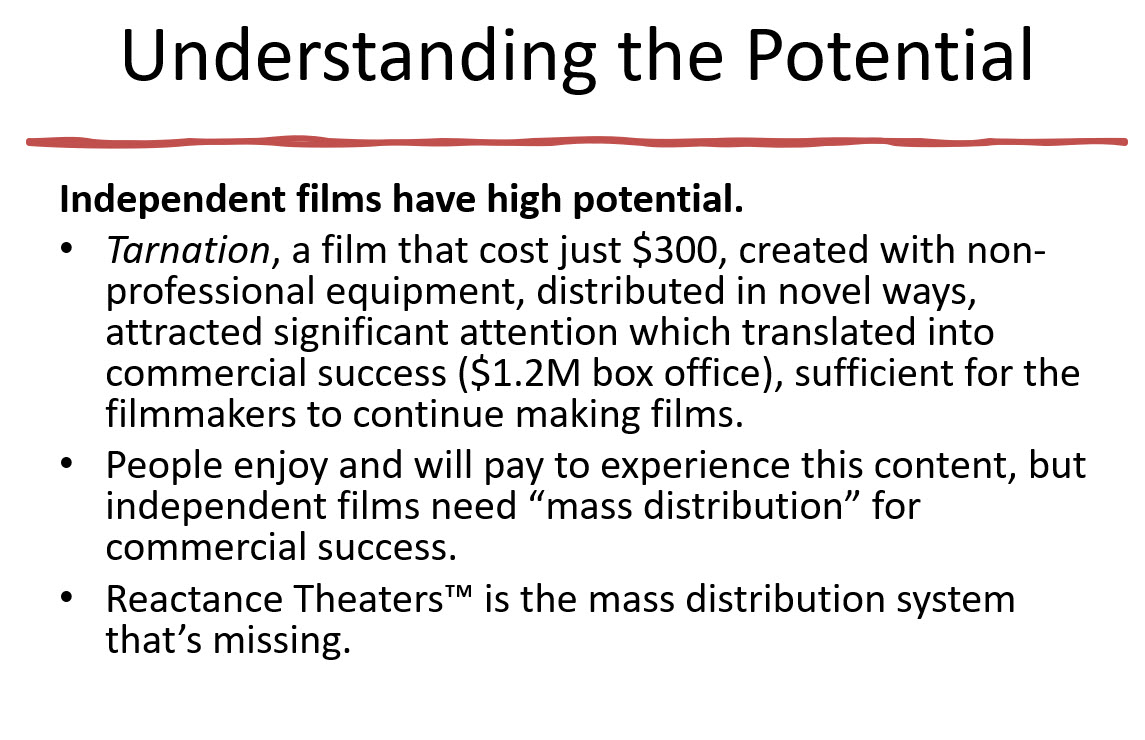
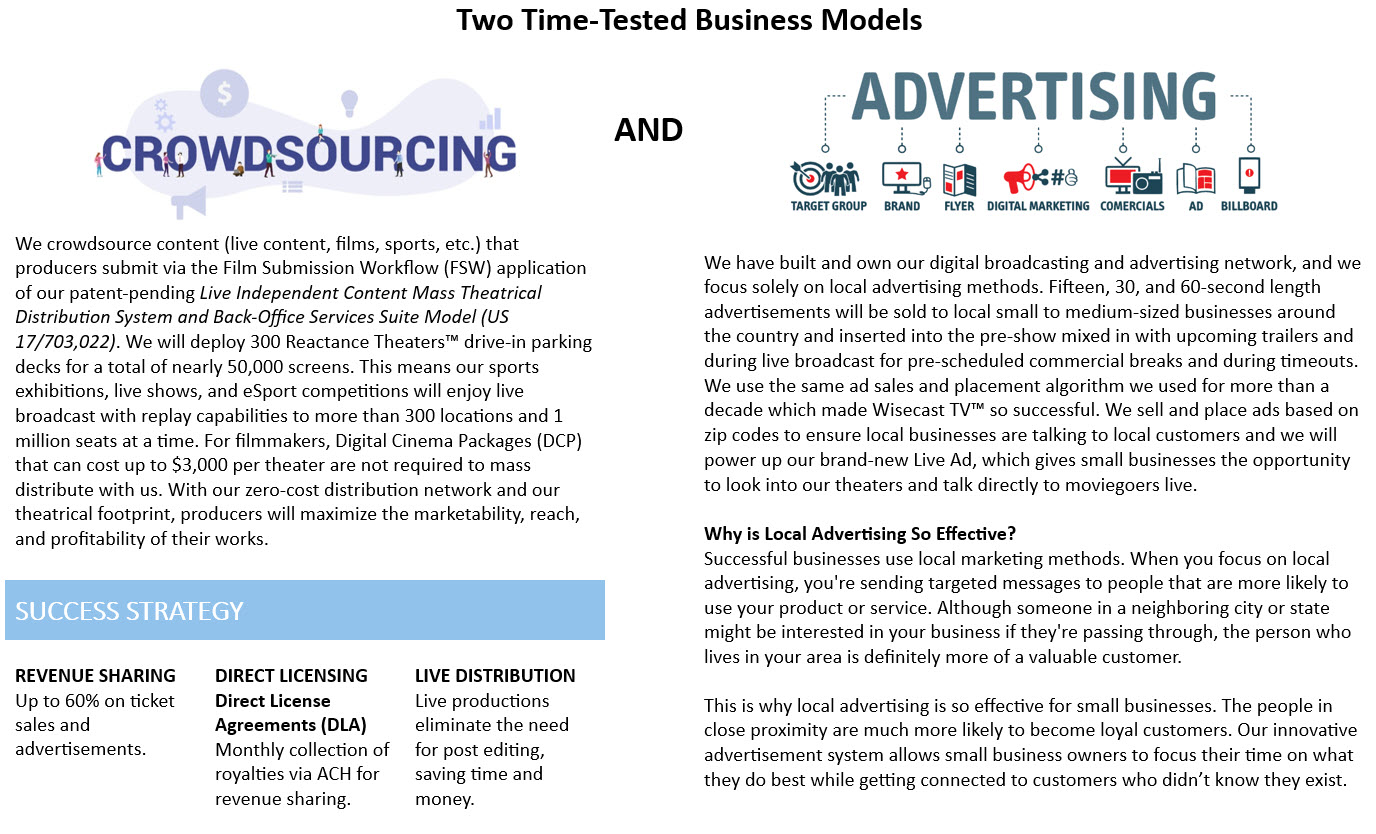
The Drive-In Theater Parking Deck
We are building 300 sites across the nation for our 1 million seat formula. Each Drive-In theater parking deck houses a 6-story building with multiple private 24-seat theaters, giving moviegoers the option to experience the drive-in theater or have a more traditional experience.



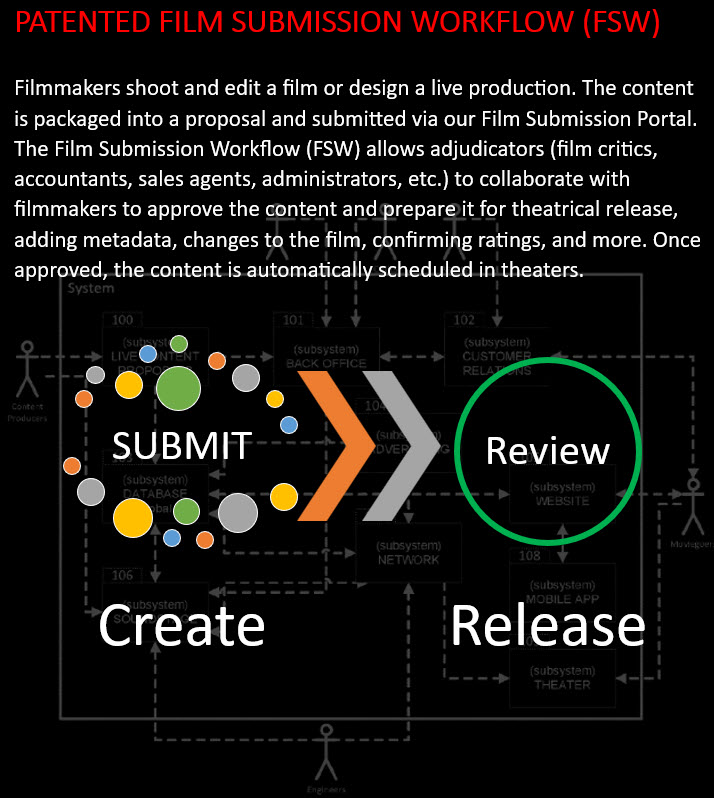
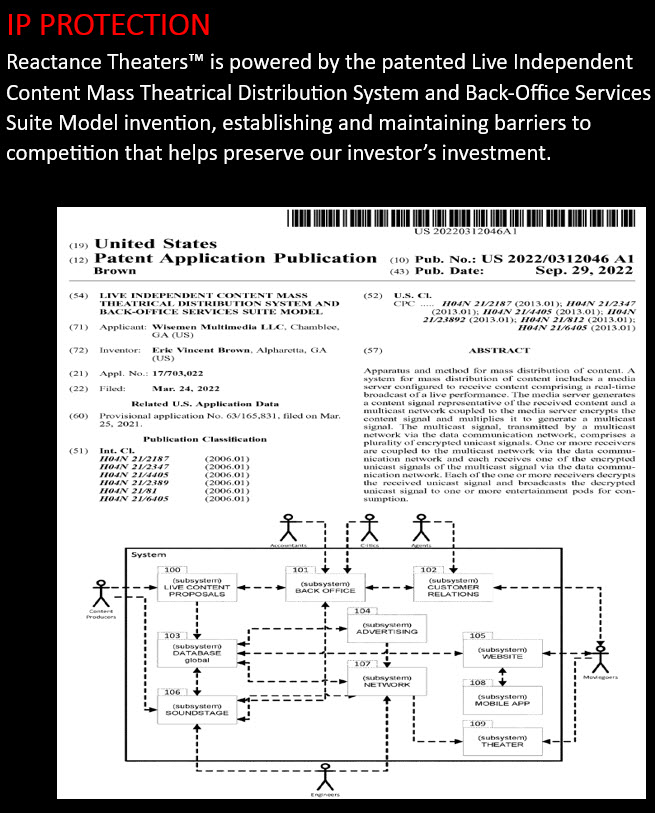
3
The Problem Facing Society

